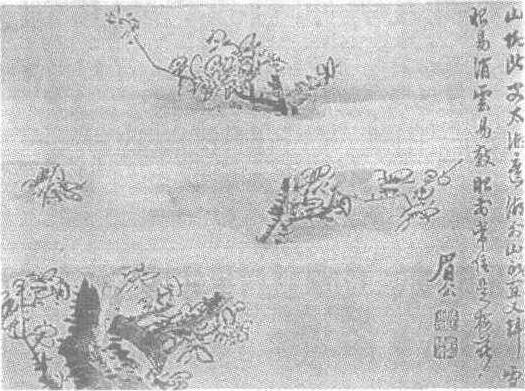陈继儒《墨梅图》
纸本,墨笔。一册共四页,每页纵21.8厘米,横29.6厘米。现藏辽宁省博物馆。草书画墨梅,枝干曲折,变化多端,花瓣则草草点染。笔墨韵味颇浓。此画作者写梅,以枝干为主,横斜曲直,撷姿取态。与 一般人画梅枝干长直,圈点花瓣的传统大相径庭。这是陈继儒的新创造。
陈继儒(1558—1639),字仲醇,号眉公,华亭(今上海郊区)人。隐居不仕,以书画终其身。其画大体为墨戏之作。其绘画理论与莫士龙、董其昌毫无二致。总括有如下数点;
(1)以书入画,以书法代画法: “画者六书象形之一,故古人金石钟鼎篆隶往往如画,而画家写水、写兰、写竹、写梅、写葡萄,多兼书法,正是禅家一合相也。”
(2)将历史上的画家分为南北二宗,把南宗视为文人画正统,扬南贬北。
(3)把笔墨韵味放在首位,“文人之画不在蹊径,而在笔墨。李营丘惜墨如金,正在下笔时要有味耳。”


陈继儒 《墨梅图》